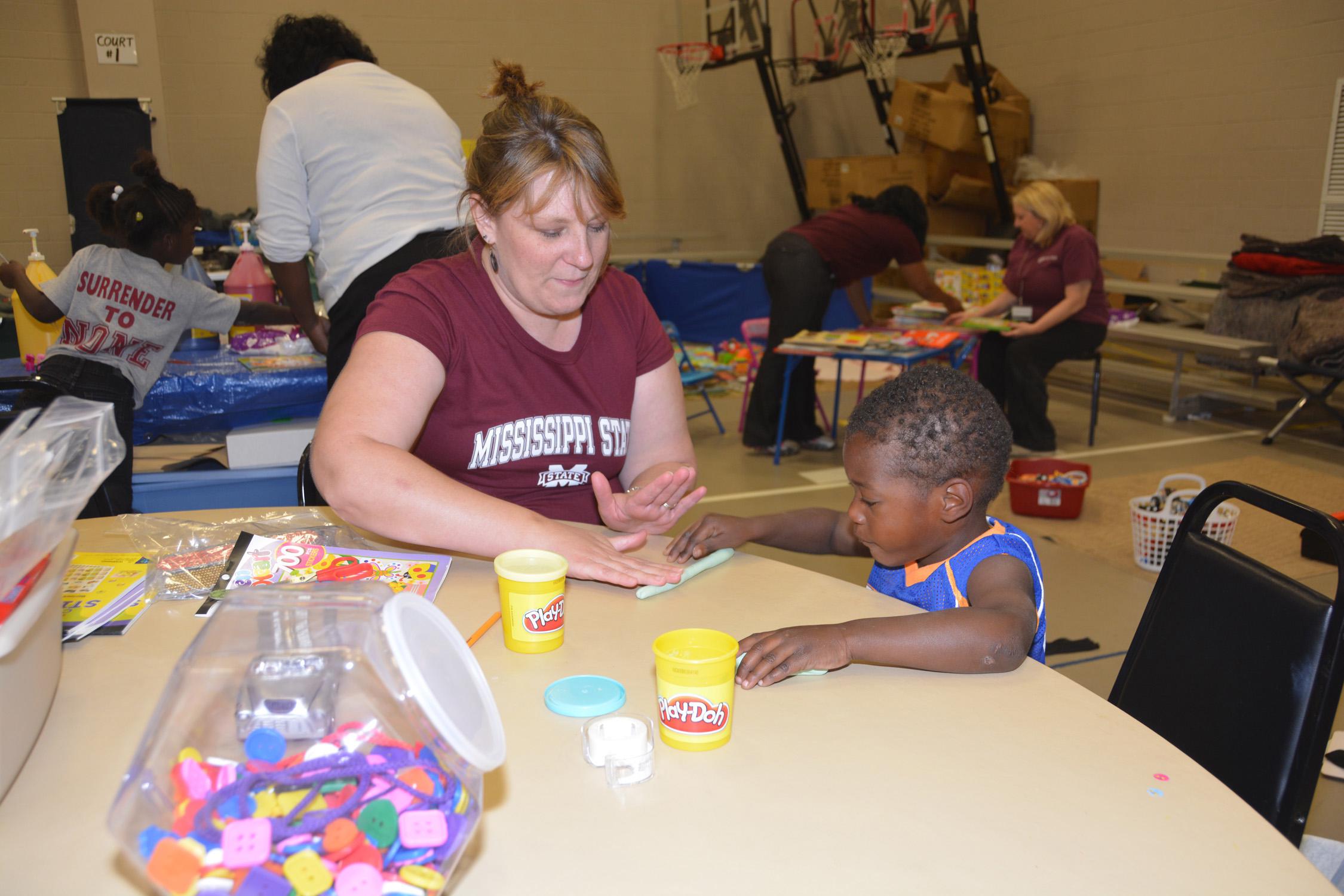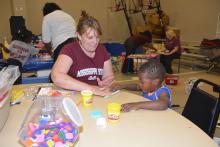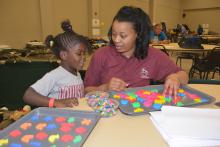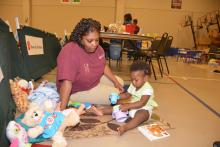Information Possibly Outdated
The information presented on this page was originally released on May 2, 2014. It may not be outdated, but please search our site for more current information. If you plan to quote or reference this information in a publication, please check with the Extension specialist or author before proceeding.
Extension helps shelters become child friendly
LOUISVILLE – Long before the dark clouds rolled across the state on April 28, the Mississippi State University Extension Service had been prepared to provide a silver lining for children displaced by disaster.
Louise Davis, Extension professor of child and family development, said “safe spaces” are set up at shelters in Tupelo and Louisville. Extension staff with the Mississippi Child Care Resource and Referral Network will oversee these sites.
“These child-friendly spaces provide two important services: one for the children and another for their parents,” Davis said. “The children are given fun and educational opportunities to take their minds off the stress caused by the storm. The parents remain onsite and are then able to take care of paperwork and other demands caused by the disaster.”
Davis said plans for the safe zones began during the Hurricane Katrina recovery. The idea was made possible through a partnership with Save the Children, an international nongovernmental organization that primarily provides relief and support to children in developing countries.
“Save the Children developed the Child-Friendly Spaces Program and has used it all over the world,” Davis said. “We also could not provide these services without the cooperation and partnerships of the Mississippi Department of Human Services, the American Red Cross and other agencies involved in the shelters.”
Davis said the goal is to provide child-friendly spaces for every child in an American Red Cross shelter for as long as possible.
Jamila Taylor, a field supervisor with the Resource and Referral Network, said the target audience is preschool through age 12, but accommodations can be made for children who are not toilet trained and for older children, who could assist the staff.
“We provided each child with a shelter bag that includes activity books and other items to keep them engaged,” Taylor said. “This has been a very stressful experience for everyone, and children, especially, need activities to take their minds off the disaster.”
Resource and Referral Network personnel have been trained in the Child-Friendly Spaces Program and the Incident Command System, which is used for the command, control and coordination of emergency response efforts.
“Our staff members have backgrounds in child development and are trained to support children as they cope with the fear and anxiety of being in an unfamiliar setting,” Taylor said. “While parents are busy at the shelter, children can receive attention from adults trained to help them through this traumatic time.”
Lydia Bethay, a project manager with the Resource and Referral Network, has worked in the Tupelo and Louisville shelters.
“The most striking aspects are the stories the children tell about the storm. They really don’t understand what is going on and just want to go home to familiar surroundings,” Bethay said. “We are glad to be able to provide a safe place with adults who can listen and let them experience a stress-free moment. We can tell the parents really appreciate the break, too.”










